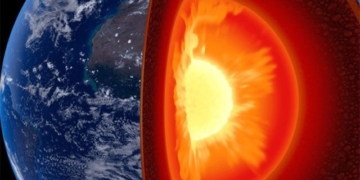With a strength 10-15 times greater than NASA’s Kepler telescope, China’s new satellite aims to search for exoplanets located in the habitable zone of sun-like stars.
After launching rovers to the Moon and Mars, and establishing its own space station, China is now turning its attention to distant star systems. In April, scientists will unveil detailed plans for China’s first exoplanet discovery mission. This mission aims to survey planets outside our solar system, in other regions of the Milky Way, in search of Earth-like planets within the habitable zones of sun-like stars. Astronomers believe that such a planet (referred to as Earth 2.0) would have conditions suitable for the existence of liquid water and possibly life.

Simulation of a star system in the Milky Way. (Photo: iStock)
Researchers have discovered over 5,000 exoplanets in the Milky Way, primarily through NASA’s Kepler space telescope. Kepler operated for 9 years before running out of fuel in 2018. Some of these planets are rocky and Earth-like, orbiting small red dwarf stars, but none meet the definition of Earth 2.0. With current technology and telescopes, it is challenging to find signs of small Earth-like planets when their host stars are a million times heavier and billions of times brighter than the Sun, according to Jessie Christiansen, an astrophysicist at the Exoplanet Science Institute at the California Institute of Technology in Pasadena.
The mission, named Earth 2.0, could change this reality. The project is currently in the initial design phase with funding from the Chinese Academy of Sciences. If the design is approved by a panel of experts in June, the team responsible for the mission will be funded to begin constructing the satellite. They plan to launch the spacecraft using a Long March rocket before the end of 2026.
The Earth 2.0 satellite is designed to carry seven telescopes to observe the sky over four years. Six of the telescopes will work together to survey the Cygnus-Lyra constellation, the same region that the Kepler telescope previously explored, according to Jian Ge, the astronomer in charge of the Earth 2.0 mission at the Shanghai Astronomical Observatory of the Chinese Academy of Sciences.
This cluster of telescopes will search for potential targets by detecting small changes in the brightness of stars, indicating that an exoplanet is passing in front of them. Using multiple small telescopes will provide scientists with a broader field of view compared to using a single large telescope like Kepler. The six telescopes of Earth 2.0 will observe about 1.2 million stars. At the same time, Earth 2.0 can monitor many faint and distant stars beyond NASA’s Transiting Exoplanet Survey Satellite (TESS), which is currently surveying bright stars near Earth. “Our satellite is 10 to 15 times more powerful than NASA’s Kepler telescope in terms of sky surveying capabilities,” Ge said.
The seventh instrument on the satellite will be a gravitational lensing telescope to survey rogue planets that do not orbit any stars and exoplanets far from their host stars similar to Neptune. This telescope will focus on the center of the Milky Way. If successfully launched, it will be the first gravitational lensing telescope to operate in space.
By combining data from Earth 2.0 with observations from Kepler, the research team hopes to confirm the existence of true Earth-like exoplanets. Ge is optimistic about finding dozens of such planets and aims to publish data within 1-2 years after the launch.


















































